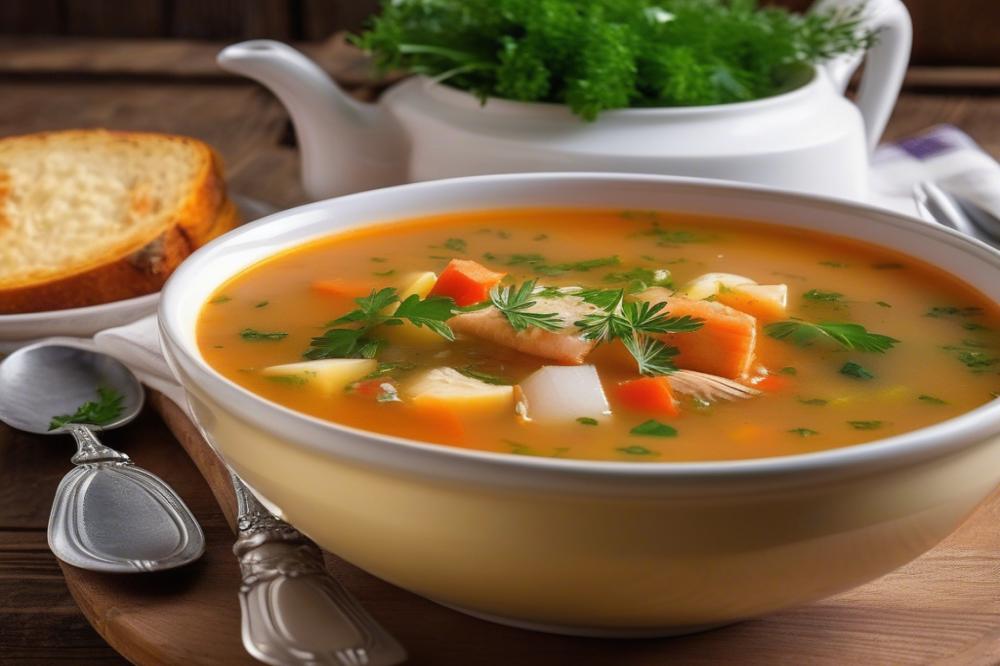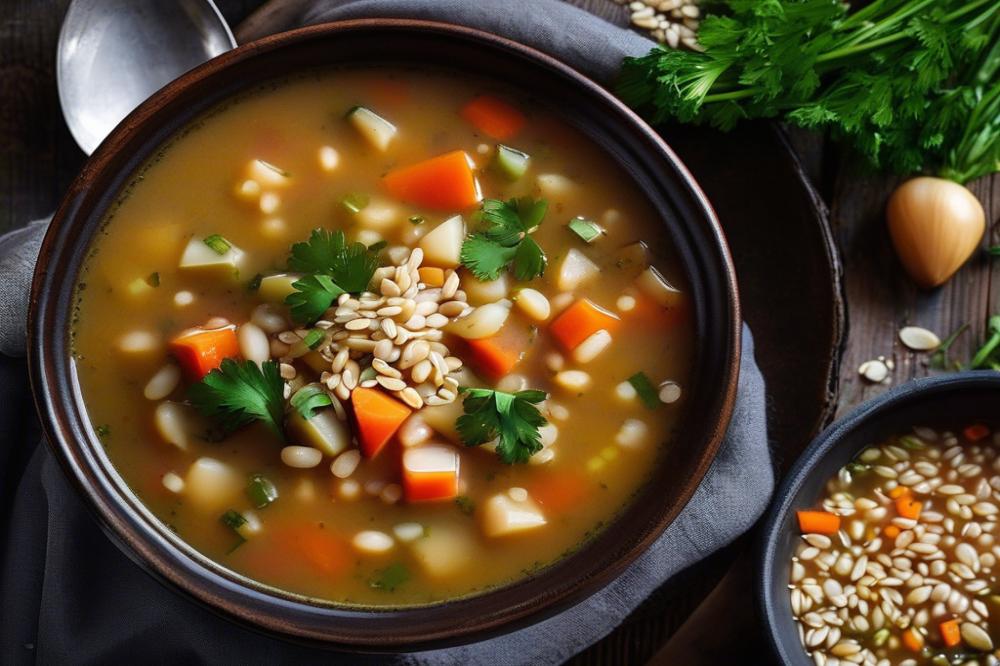Overview of Polish Fish Soup
Polish Fish Soup, widely known as Zupa Rybna, holds a special place in the hearts and kitchens of many families in Poland. This traditional dish is not just a meal; it represents a culinary heritage that has been passed down through generations. This seafood soup is often enjoyed during special occasions, especially around Christmas and Easter, highlighting its cultural significance in Polish cuisine.
The recipe for Zupa Rybna varies from one household to another, showcasing regional influences and family traditions. Commonly made with fresh fish, the soup features a rich fish broth that is comforting and nourishing. Many consider this dish a healthy soup, filled with nutrients and flavors that warm the soul. dill seasoning brings a unique taste, enhancing the tradition of this beloved meal. It’s no wonder that dill is a key ingredient, as its fresh aroma perfectly complements the fish and other vegetables.
Serving Zupa Rybna not only fills the stomach but also creates connections among family members and friends. Sharing this dish can evoke memories and stories, making it a staple at numerous gatherings. Enjoying a bowl of Polish Fish Soup is more than just savoring a delicious meal; it’s an experience filled with comfort and nostalgia, showcasing the beauty of traditional Polish recipes.
Polish Fish Soup: Ingredients and Cooking Instructions
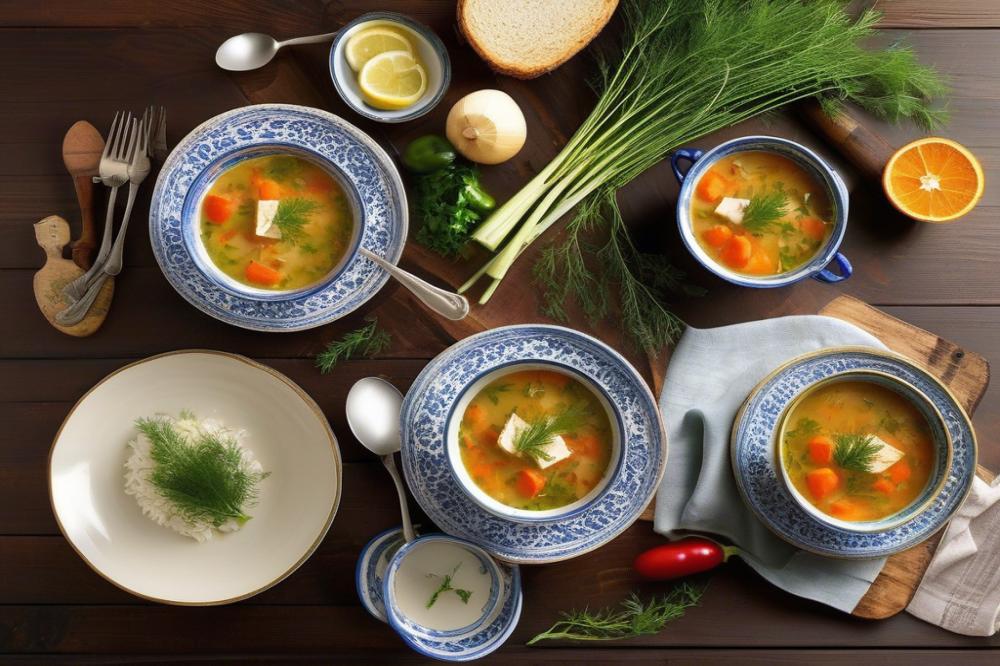

List of Ingredients
To create a delightful seafood soup, gather the following ingredients:
- Fresh fish (e.g., cod or haddock) – about 1 pound
- Vegetables: 2 carrots, 1 leek, and 2 celery stalks
- Dill seasoning – to taste
- Fish broth or stock – 4 cups
- Potatoes – 2 medium-sized, diced
- Salt and pepper – to taste
- Optional: 1/2 cup cream for a richer flavor
- Additional seafood (like shrimp or mussels) can also be added
Cooking Instructions
Follow these easy steps to prepare Zupa Rybna:
- Start by preparing the fish. Clean and fillet it, removing the skin and bones.
- Chop the vegetables into small pieces. This ensures they cook evenly.
- In a large pot, heat a drizzle of oil over medium heat. Add the leeks, carrots, and celery. Sauté for about 5 minutes until they soften.
- Pour the fish broth into the pot. Bring it to a gentle boil.
- Add diced potatoes to the broth. Simmer for approximately 10 minutes until they are tender.
- Now, introduce the fresh fish into the pot. Cook for another 5 to 7 minutes until it flakes easily with a fork.
- Season with dill, salt, and pepper. Adjust these to your liking.
- For a creamy texture, stir in the optional cream just before serving.
- Serve the soup hot, garnished with fresh dill for added flavor.
Nutritional Information
This healthy soup is packed with nutrients. Fresh fish provides protein and omega-3 fatty acids, important for heart health. The vegetables contribute fiber, vitamins, and minerals essential for overall wellness.
Dill not only enhances the flavor but also has health benefits. It may aid digestion and reduce inflammation. This Polish cuisine dish is a warm comfort food perfect for colder days.
Exploring Polish Cuisine and Tradition
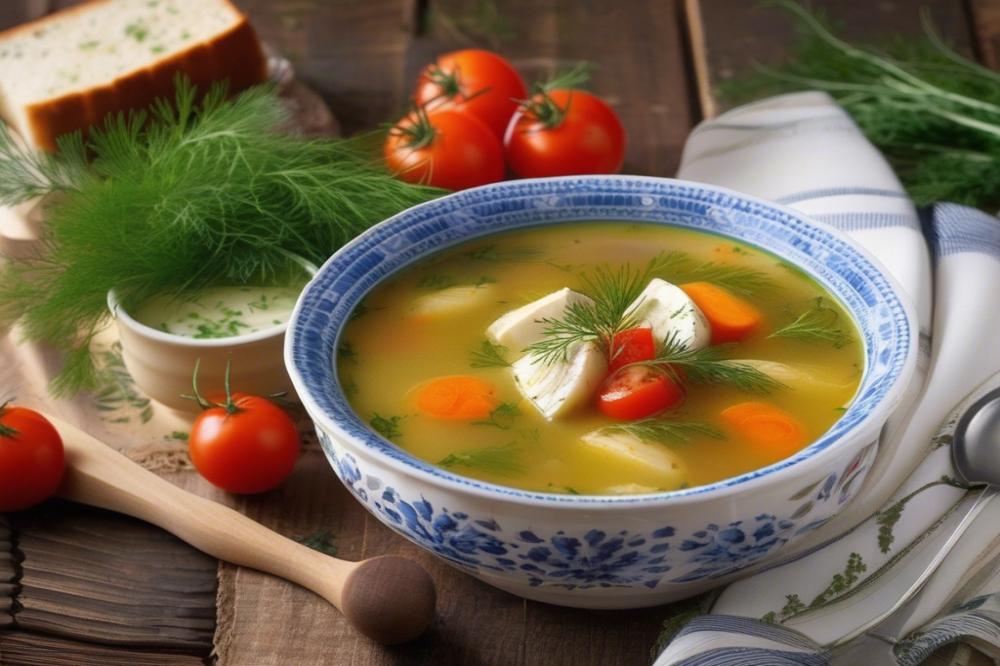

Seafood plays a vital role in Polish diets, especially in coastal areas. Fish is more than just a source of protein; it is part of cultural identity. Many families enjoy it during special occasions and everyday meals alike. You’ll often find fresh fish on the menu, with recipes handed down through generations. The importance of seafood in Polish backgrounds is significant, as it connects people to nature and their local waters.
Fish soup has a long history in Polish households. Traditionally, it was made from whatever catch was available. This practice ensured nothing went to waste during fishing trips. Families would gather around the dinner table, enjoying a warm bowl of soup. Their shared moments revealed much about their identity and values. In countless homes, fish broth was a staple. It symbolizes care and nurturing. Those solid connections still thrive today with modern variations.
Variations of Zupa Rybna Throughout Poland
Throughout Poland, many regions boast unique takes on this dish. Each version reflects local flavors and traditions. In some areas, you may find a richer broth, while others explore lighter variations. Certain recipes feature a medley of fish, while others might focus on a singular type. Ingredients translate regional tastes and preferences. Dill seasoning often stars in these seafood soups, adding a special touch that enhances the dish’s aroma and taste.
Comfort food traditions intertwine beautifully with fish soup. For many, a warm bowl signifies home and security. It’s the kind of healthy soup that brings people together during cold winters. Families often prepare the dish as a remedy for the soul. The warmth of the broth and the heartiness of the fresh fish offer solace on tough days. Polish cuisine celebrates these flavors, providing comfort and nourishment in each spoonful.
As you dive deeper into traditional Polish recipes, you’ll discover the rich cultural significance behind each. Understanding the context of Zupa Rybna opens a window into many Polish kitchens. Experience the heartwarming tradition enjoyed by countless families each day.
Healthy Soup and Comfort Food
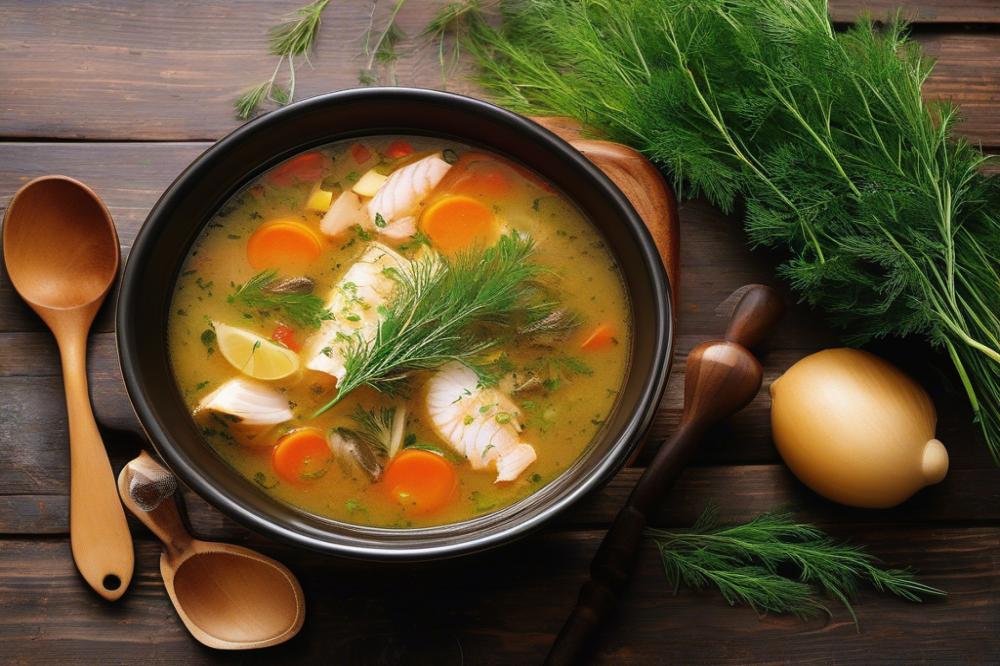

Fish broth is not just flavorful; it brings several health advantages. It is rich in omega-3 fatty acids that support heart health. Consuming seafood soup regularly can also enhance brain function. The nutrients present in the broth are easily absorbed by the body, making them particularly beneficial.
Many people regard Zupa Rybna as a nutritious option. This dish combines the goodness of fresh fish and various vegetables. As a staple in traditional Polish recipes, it offers a wholesome experience with each bowl. Vitamins and minerals packed in this soup contribute significantly to well-being.
Flexibility is one of the soup’s strong points. The recipe can be modified to accommodate various dietary preferences. For those avoiding gluten, using rice or corn pasta instead of traditional noodles works well. Similarly, a dairy-free version can still taste delightful with coconut milk or a vegetable broth base.
Fresh ingredients play a crucial role in creating a delightful seafood soup. Using high-quality fish enhances flavor and texture. Moreover, combining seasonal vegetables adds even more health benefits. Dill seasoning, a key component, brings both taste and aroma, while also offering potential anti-inflammatory properties.
Final Thoughts on Polish Fish Soup
Polish fish soup has a special place in the hearts and kitchens of many. Its rich combination of flavors, influenced by traditions, makes it a delightful dish. The use of dill adds an aromatic twist, enhancing the overall taste of this seafood soup.
Trying your hand at making Zupa Rybna at home can be a rewarding experience. The process invites anyone to explore the beauty of Polish cuisine. Cooking together with family or friends can bring a sense of community. Don’t hesitate to experiment with the ingredients, making this dish your own.
Embracing traditional recipes allows us to connect with different cultures and their stories. Each bowl of this hearty soup tells a tale of warmth, comfort, and heritage. As you savor each spoonful, take a moment to appreciate the flavors and history behind them.
Incorporating Zupa Rybna into your meals will diversify your palate while bringing a part of Poland into your home. So, gather your ingredients, invite over loved ones, and enjoy this wholesome recipe. The joy of cooking is not just in the meal but in the shared moments it creates.

